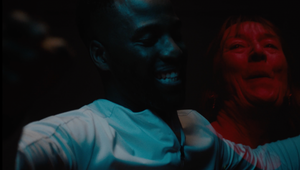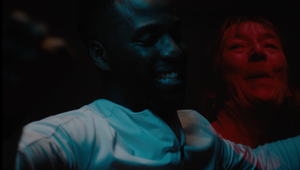
Masterclass with House of Retouching

Image credit: Jason Bell
The devoted retouchers at House of Retouching are known to celebrate each and every image that comes through their hands, and we wanted to celebrate them by highlighting their recent big win! House of Retouching were awarded two prizes Silver and Bronze at the Prix de la Photographie Paris 2024 (PX3) competition. House of Retouching’s CEO, Krzysztof Gadomski, lifts the curtain on how the post-production house came to be and shares some advice on how to level up an image.
As of today, HofR offers a wide range of services, from (of course) retouching and colour grading images to CGI and branding. It is hard to believe that when this all started, Krzysztof had no photographic background.
Let’s rewind to the year 2000. While people were getting over the Y2K scare, Krzysztof was entering the world of DTP and basic retouching after being hired by an advertising agency. There, he meets Tomek Kozakiewicz, a photographer who would soon become HofR’s co-founder—but neither of them knew this yet. In fact, at the time, Krzysztof had no idea that there was such a job as a ‘retoucher’. It’s Tomek who, a couple of years later, after coming back from a trip in the US, first mentioned the profession to Krzysztof.
It may be that Krzysztof had no photography experience, but he did—and still does—have a passion for it. From the get-go, he understood that the first step he had to take as a retoucher was to understand the photograph he was looking at and, most importantly, to try and recreate the feeling the photographer must have felt when pressing the shutter button. “This was not easy,” said Krzysztof. We bet. He had to learn to analyse a photo. What’s cool (and what isn’t)? What is visually bothersome? What can be added or removed to enhance the intended message? Only after figuring this out could he move on to post-production.
It took him and Tomek two years to first learn, then build up their approach to photography, and that approach is…passion. And patience. But mostly passion. Krzysztof’s focus has always been on quality rather than quantity. He admits it probably wasn’t a good business approach, but that’s just not how he looked at it. And actually, that seems to be one of the main reasons behind HofR’s success.
“I might even venture the thesis that if I had gone down the ‘toddler’ route, my studio would no longer exist. Without an elaborate, unique style, you are just easy to replace.”
It’s obvious that this elaborate and unique style paid off. Over time, the bar got raised for HofR, and they continue to deliver exceptional work.
The most memorable projects were the most challenging ones. Krzysztof recalls having to retouch photographs of athletes for Reebok that would appear in landmark locations, such as the Underground, Tiananmen Square, or even the Chinese Wall.
Another unforgettable project was for the Royal Family, for the christening of Prince George, photographed by Jason Bell. House of Retouching were under quite some time pressure, as they received the photos in the late afternoon and had to get everything ready by 5AM the next day. “I was so scared that someone would hack us that I disconnected the internet in the studio,” said Krzysztof.
Krzysztof’s favourite project though, are all the posters (“Without exception!”) for the Royal Opera House and English National Ballet. He also viscerally remembers the stunning impression left by the armour renders he received from Disney for an Avengers cover they retouched. He had never seen such renders in his life—dust, scratches, chips and wear and tear…
There are a few tools that are undeniably necessary for daily retouching, but Krzysztof insists on the surroundings. The environment in which he works is crucial. It should always be a place where the level of brightness is constant and the light temperature is neutral. This is particularly important for the photo viewing experience—changing lighting conditions affects perception, which itself impacts the quality of work.
There’s no ‘perfect profile’ for a retoucher (apart from an impeccable taste for visual excellence, maybe). Skills need to be worked on and developed over time, continuously. Keep in mind, new software versions constantly bring new tools and capabilities that need to be tested, practised, and mastered. Knowledge of colour theory and channel principles will always come in handy but, according to Krzysztof, the main quality a retoucher must have is the ability to identify a problem—not that of knowing how to solve it. A retoucher must know what they’re aiming for, what they want to achieve, only then can they start thinking about the next steps (a process that can take more than a day!). One should also always avoid delving into a ‘blind experiment’. That is, starting a project without knowing what the end goal is. Another common mistake is to overfocus on a specific aspect of a photograph. Say, thoroughly retouching a face but leaving hair uncombed or clothes crumpled. It’s essential to keep the entire photo in mind and treat each of its different parts with equal care, otherwise the photo becomes aesthetically uneven and “you can clearly see where there has been interference.” The key skills to keep in mind (and to keep on developing) are: analysis, planning, tool selection, and theoretical knowledge.
Sure, there might not be a perfect retoucher profile… but there is indeed a perfect retouch. Krzysztof outlines House of Retouching’s process for us in more details:
Firstly (or rather, ‘again’ — it is that important), photo analysis. There’s a series of questions a retoucher should ask themselves. What type of photo is it? What, or who, does it depict? Who, or what, is the photo’s protagonist? What did the photographer want to convey? Who is the photograph’s intended audience? With answers to these questions, they can move on to the creative process.
Next, setting the colour style. This would preferably be decided in consultation with the target client. It is crucial to ensure that their interpretation coincides with the client’s wishes. Communication from the very beginning guarantees that they’re on the right track.
Once they have confirmation that the colour style meets the client’s expectations, they move on to building the base. They set the scene (what should be visible at first glance, what should be moved to the background, etc) and remove unnecessary elements.
After that come adjustments, that is, cleaning, fixing and aligning the photo. This is the more technical aspect that ensures the photo is technically… well, perfect.
They then carry on with creative moves. Time to add to and enhance the photo. It is important not to overdo it and systematically check that the whole continues to make sense.
Lastly, minor finishing touches. Small edits, such as local colour corrections, shapes, lines and perspective are applied to the (already near perfect) photo. Every single step is carried out with full respect for the author’s photograph and their vision. Control and correction cannot be omitted.
“Don’t be afraid to step back, change and look for the perfect solution. (...) The retouching process is complex and requires attention at every stage to achieve the perfect end result.”
Krzysztof reminds us that, of course, the final look of a photograph is decided by the client, advertising agency, art director, production house or photographer themselves. As retouchers, they can advise, suggest, and look for solutions to various problems, but their main goal is first and foremost “to render a coherent photograph, nice, aesthetically pleasing and clean in its artistic expression.”
When thinking about the future of photo retouching and post-production in general, Krzysztof’s mind goes straight to AI. No one really knows what changes will occur in this industry. While many stages have been automated and accelerated, Krzysztof firmly believes that “creativity needs a creator, and for now, the creator is human and I hope it will remain that way.”















